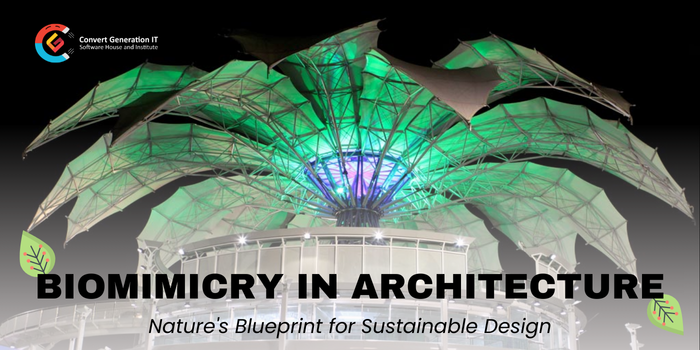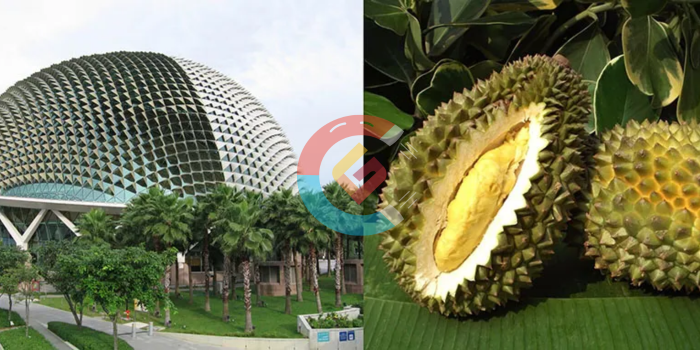
Biomimicry in Architecture: Sustainable & Innovative Design
Biomimicry in Architecture: Nature’s Blueprint for Sustainable Design
‘Biomimicry in architecture’ the application of design concepts derived from nature in architecture has come a long way in becoming a noble tool. The application of biomimicry is especially evident in the vein of leaf biomimicry, which employs the structure and function of leaves in the practice of architecture. Equally, biomimicry in fruits studies the peculiarities of fruit structures that can be incorporated into architectural structures. In this article, the author has given detailed knowledge about the principles, applications and benefits of biomimicry in leaves and fruits especially in the architectural preliminary which shows the profound impacts of biomimicry in architecture.
Understanding Leaf and Fruit Biomimicry in Architecture
Leaf Biomimicry in Architecture
Biomimicry of the leaf structure entails understanding specific features of the plant to establish how it incorporates aspects such as photosynthesis, sticking to water and other activities for such an extended period. In this way, following such ideas, architects will be able to design structures that not only consume less energy but also improve the quality of the lives of the people who work in such buildings.
Fruit Biomimicry in Architecture
Biomimicry of fruits looks into the structure of the peel, how these nutrient bearing organisms store edibles, and how they eject seeds. Overall, with the help of the described features, architects can design buildings that are durable, effective in the use of resources and compliant with environmental conditions.
Key Features of Leaves and Fruits
Photosynthesis (Leaves)
Leaves are necessitated by the fact that they are organs that are tasked with the responsibility of absorbing light from the sun for the purpose of producing energy. The architectural designs based on this process can include solar panels or green roofs which correlate with leaves catching the sun’s rays as effectively as possible.
Water Management (Leaves)
Stomata is another structure present in leaves that facilitates the rates of water loss and exchange of gases. This feature can be mimicked in buildings to establish techniques for natural ventilation and rainwater management in a bid to diminish the dependence on artificial climate control structures.
Thermal Regulation (Leaves)
Veining and tempering of plant organs like leaves assist in the regulation of temperature through the creation of shade and transpiring cooling. This knowledge can be applied by architects equally in designing facades for structures in such a manner that shall help in the reduction of heat intake as well as assist in natural cooling thus conserving energy costs.
Protective Skins (Fruits)
The contents of fruits are well protected by their thick outer covering which protects from factors such as environmental unfavorable conditions as well as pests. About architecture, it is possible to work on the creation of envelopes for buildings that would serve as a shield against extreme climate and dangerous emissions.
Nutrient Storage (Fruits)
Fruits effectively conserve the nutrients as well as the water to support their seeds. Similarly, buildings can imitate this by ensuring efficient storage devices of energy and water to improve resourcefulness.
Seed Dispersal (Fruits)
Fruits are created to easily disperse seeds to ensure species’ continuation. This principle may apply to building structures that we see in architecture such as modular buildings, which if created on this principle, enables flexibility and expansion.
Applications of Leaf and Fruit Biomimicry in Architecture

Sustainable Building Materials
A new material solution concept based on the structure of leaves and fruit can help in the improvement of the sustainability of a building. Scientists are engineering materials that either reflect or absorb light like leaves do or regulate temperature. This could contribute to the lowering of energy usage in buildings.
Green Roofs and Vertical Gardens
Like the ability of a leaf to absorb water and also offer the aspect of an insulator, green roofs and vertical gardens were developed. Besides having a nice look, these designs contribute to a better climate through cleaner air and fewer heat islands in dense urban areas.
Natural Ventilation Systems
In this manner, architects can replicate the methods of working with leaves to optimize the natural convection of air in buildings without having to incorporate mechanical methods. This may result in achieving massive energy conservation and also perhaps the quality of the indoor air will be enhanced.
Living Facades
Similar to how a leaf carries out photosynthesis, living facades introduce plant growing into a building’s exterior to enhance the quality of air and lessen energy demands, as well as to create green living walls.
Solar-Powered Buildings
Scientists envisage trends that pertain to creative construction; architects are coming up with designs that incorporate solar panels much like the energy harvesting leaf.
Self-Cooling Buildings
By understanding the ways through which the leaf regulates temperatures, the architects can be in a position to design buildings with the ability to cool themselves reducing the usage of air conditioners.
Water-Efficient Architecture
Referring to the water management system that applies to the leaves, it is now possible to build some sort of building structures that are very useful in properly preserving water and probably help in raining more water.
Protective and Adaptive Building Envelopes (Fruits)
Designs show that it’s possible to construct building envelopes that everyone can refer to as protective ones like the skin of fruits while at the same time making sure that these exteriors provide better insulation and shield from the environment more than the current existing ones. Seed dispersal-inspired layouts may result in the adaptability of structures with the design’s modularity.
Lightweight and Strong Structures
Taking the leaf structural system as well as the fruit skin shells, which can withstand environmental forces while being extremely lightweight, architects can design buildings with such qualities.
Benefits of Leaf and Fruit Biomimicry in Architecture
Environmental Sustainability
Reflection of biomimicry on leaves and fruits can have a large extent of decreasing the negative effect on the environment from construction. Through proper use of energy and limited wastage, these designs enhance the achievement of sustainability objectives and fight climate change.
Economic Efficiency
In a nutshell, biomimicry in architecture results in affordable operational costs through architectural designs. If there is less energy used the utility bill will be low, and new materials also lower the maintenance cost in the future.
Enhanced Aesthetic Value
The creation of biophilic designs leads to aesthetically pleasing constructions that coalesce with the surrounding biosphere. It can enhance the general appearance of cities and towns that facilitate the setting up of the centers and this leads to a fascinating environment for individuals in communities and tourists.
Cultural Symbolism
Leaves and fruits convey the meaning of growth, health, prosperity and so on. Evaluating these aspects in realizing different elements of architecture assists in making the populace relate to them better and furthering the layers of signification.
Innovation
Designs such as mimicry of leaves and fruits increase the awareness of the architect of new forms and materials hence enabling the development of new archetypes that break bounded systems.
Connection to Nature
This way the process of cutting the social fabric between those who built homes in communities and the natural world is alleviated by bringing the fresh environment closer to the people.
Embracing Leaf and Fruit Biomimicry in Architecture
Biomimicry in Architecture illustrates the prospects of designing efficient, sustainable and beautiful structures. Therefore, analyzing the natural world will help architects to find new approaches that can solve modern problems in the architecture of cities. Looking into the future development of biomimicry as a field of study the use of biomimicry in architecture is expected to be vital in determining the overall future of sustainability in the construction of buildings. Implementing such principles ensures that there is environmental control within the premises and also improves the standard of life for the inhabitants of these structural structures and the community at large. For more innovative solutions and expert IT training, visit CGit – where technology meets excellence.
FAQs on Biomimicry in Architecture
What is leaf and fruit biomimicry in architecture?
How do buildings benefit from leaf biomimicry?
What are some real-world applications of fruit biomimicry in architecture?
How does biomimicry contribute to environmental sustainability in architecture?
Can biomimetic architecture improve the aesthetic appeal of buildings?
You may also like

Freelancing SEO Services on Fiverr to Make Sites Visible

Get Hostinger Referral Discount – Exclusive Offer


